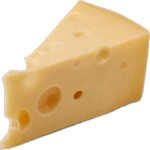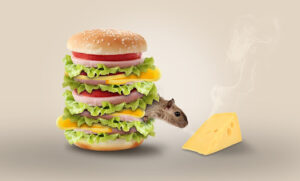
Queso (Cheese)
How do you say cheese in Spanish?.
“El queso” can be defined as “a milk preserve obtained by coagulation, pressing and acidification of the clot and matured or not depending on the type”.
On the other hand, the International Council of Geneva defines it as “the product resulting from the ripening of the curd from the coagulation of determined with the rennet or from the acidification of pure milk, of the cream removed from it or of the milk. partially or skimmed, not added with any substance, except for the products of normal cheese making, such as ferments, salt, spices, special colorants, etc ”.
Spanish Vocabulary:
cheese – queso
cream – nata
alimentos – food
animal proteins – proteínas animales
totally skimmed milk – desnatada total
partially skimmed milk – desnatada parcialmente
buttermilk – suero de mantequilla
tissue – tejidos
mineral calcium – calcio mineral
human skeleton – esqueleto humano
Example:
I love cheese – Yo amo el queso
My favorite cheese is the blue one – Mi queso favorito es el azul
“El queso” is a food of high nutritional value, being essentially a tissue-forming food. It should be noted its content in animal proteins of very good biological value and its contribution to mineral calcium, which constitutes the basis for the composition of the human skeleton.
“El Queso” | Cheese History and Culture
In excavations of stilt houses on the shores of Lake Neûchatel (Switzerland), remains of perforated clay pots dating back at least six thousand years before our era were exhumed. It was concluded that it could be a strainer (encella) designed to drain the curdled milk. The Swiss were very pleased with these conclusions, as they saw another consecration for their country, which continues to be one of the most outstanding places of cheese tradition.
Now, what milk would the lake populations have used? The whole problem lies there. Although at that time the domestication of the goat and the sheep began to change the way of life of the populations of the Mediterranean perimeter, it is not yet known whether they practiced milking and the preservation of dairy products. As for cows, they only became part of the Alpine landscape after the Roman conquest of Valais, fifty-three centuries later.
The Bible does not attach any importance to cheese at the beginning of its chronology. Although he mentions poor Abel as the first shepherd, he only refers to curdled milk and butter. Abraham, his descendant, who had inherited “rich flocks” offers “cream and milk with the calf” to the three angels who come to visit him (Genesis, XVIII-8).
How to translate cheese in Spanish?
If we go back twenty centuries before Abraham and go to Sumeria, we find another anonymous shepherd, but whose existence is fully attested by the accounts that he carefully kept from the fortieth year of the reign of King Shulgi. From these accounts (engraved on clay tablets in the National Museum of the Middle East in Berlin), we know that in eight years the herd of cattle of our operator increased fivefold and that its production went from 8 liters of cheese a year to 63.3 liters/year, which shows its excellent performance.
Almost at the same time, in the kingdom of Elam, a goat offers its milk to the pasture under the benevolent gaze of the Goddess of fertility sitting near two jugs of milk. It is a stamp deposited in the Museum of Natural History in Chicago. Finally, in the seventeenth century BC, the legal code of the Amorite King Hammurabi II establishes, as for meat, the taxes levied on the dairy products of Babylon.
Goats and sheep are easily adapted to any climate where the slightest weed sprouts, and in the case of the former where thorny plants grow. Both were for some time the only ones that provided the majority of the milk consumed or milked. Cattle, heavily exploited as draft animals, could hardly do so.
The invention of cheese, therefore, took place from goat (goat in Spanish) or sheep milk, which was more easily obtained. It is easy to imagine how the milk curdled quickly, either due to heat and carelessness or because of the clotting effect of the presence of natural enzymes in the stomach of young ruminants.
Sentences with the word cheese in Spanish:
| No me gusta el queso blanco. | – | I don’t like white cheese. |
| Mario se dedica a la industria del queso. | – | Mario works in the cheese industry. |
| ¿Quieres agregarle queso? | – | Do you want to add cheese? |
| Este queso está muy ácido. | – | This cheese is very acidic. |
| Utiliza queso para atrapar lo ratones. | – | Use cheese to catch the mice. |
| Mi papá ama el queso. | – | My dad loves cheese. |
| A mi hermana no le gusta el olor del queso. | – | My sister doesn’t like the smell of cheese. |
| Yo le agrego queso azul a casi todo lo que como. | – | I add blue cheese to almost everything I eat. |
| ¿Dónde se originó el queso? | – | Where did cheese originate? |
| Me gusta más el queso parmesano. | – | I like parmesan cheese better. |
| No hay nada como un queso fresco, un jamón ahumado y una sidra espumosa. | – | There is nothing like fresh cheese, smoked ham and sparkling cider. |
| Compré un pan y un buen pedazo de queso. | – | I bought a bread and a nice piece of cheese. |
| ¿Cómo se produce el queso? | – | How is cheese produced? |
| Estoy haciendo buñuelos de queso. | – | I’m making cheese fritters. |
| Deme usted una libra de queso. | – | Give me a pound of cheese. |
| Ella lo único que come es queso. | – | She only eats cheese. |
| El cocinero le agrego mucho queso a mi ensalada. | – | The cook added a lot of cheese to my salad. |
| Ella aprendió en su casa las primeras nociones para elaborar queso. | – | She learned in her house the first notions to make cheese. |
| Cada vez aumenta más el consumo de queso a nivel mundial. | – | The consumption of cheese is increasing worldwide. |
| De la leche de vaca se suele hacer queso. | – | Cow’s milk is used to make cheese. |
| La producción de queso, yogur y mermeladas se elaboran en forma artesanal. | – | The production of cheese, yogurt and jams are made by hand. |
| ¿Cuáles son las propiedades del queso? | – | What are the properties of cheese? |
| El queso es un alimento sólido que se obtiene por maduración de la cuajada de la leche animal. | – | Cheese is a solid food obtained by maturing the curds of animal milk. |
| Las bacterias de la leche se encargan de la definición de la textura y el sabor del queso. | – | The bacteria in the milk are responsible for defining the texture and flavor of the cheese. |
| El queso es uno de los alimentos más antiguos. | – | Cheese is one of the oldest foods. |
| El país que mayor cantidad de queso produce es Alemania. | – | The country that produces the most cheese is Germany. |
| El queso no tiene una presencia significativa en la cocina asiática. | – | Cheese does not have a significant presence in Asian cuisine. |
| Muchos vegetarianos evitan el consumo de queso fabricado a partir de un cuajo de origen animal. | – | Many vegetarians avoid eating cheese made from animal-derived rennet. |
| El queso se identifica con la zona geográfica de la que procede. | – | The cheese is identified with the geographical area from which it comes. |
| La leche más utilizada en la fabricación del queso es la leche entera de vaca. | – | The milk most used in the manufacture of cheese is whole cow’s milk. |
Read more about food in Spanish

Leave a Reply
You must be logged in to post a comment.